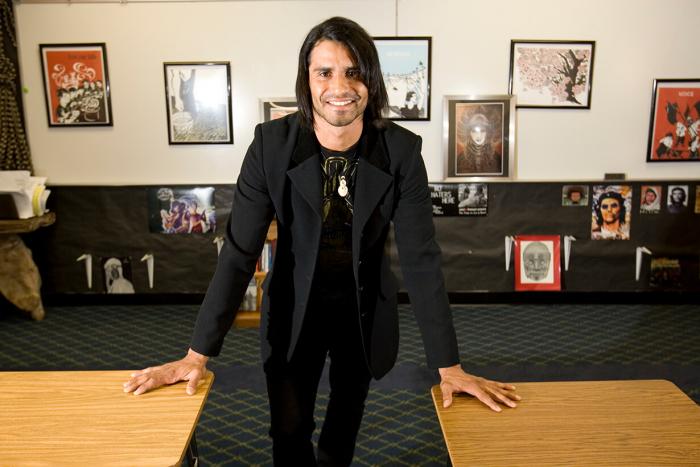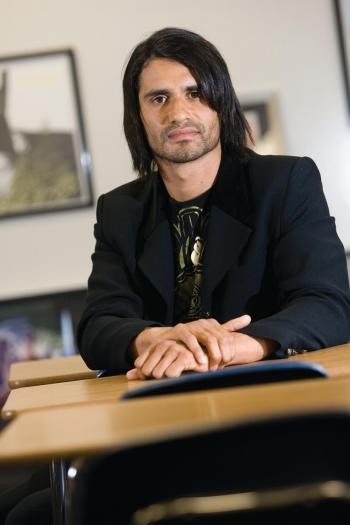
As she spoke, we sat, her classmates and I, with lumps in our throats and salt stinging-eyes:
"There's 12 of us that live at my house." A pause. "We have two bedrooms and one bathroom." Another pause. "At night, I sleep on the ground so I won't have to sleep next to my sister in the bed."
Such moments remind us, as educators, that the fight for social justice does not necessarily begin with a Third World cause in another hemisphere but begins instead with the children we serve to empower every day in our classrooms.
I teach because I believe that each of us, at our core, carries a sense of justice, however shrouded. That sense of justice recognizes inequity, empathizes with human suffering, and provides us with the impulse to act on behalf of others and ourselves.
To teach for justice is to engage in one of the most fundamental human acts, for even the act of love cannot exist where injustice guides but one of its participants. Justice should exist as a worldwide web of support, ready to help everyone realize his or her life's purpose.
But injustice entangles this web. Injustice damages, shackles and strangles those who are oppressed. We can look to some moments in history — abolition, Women's Suffrage, civil rights movements — to learn that when individuals join hands to fortify the web of justice, human suffering can decrease and harmony can increase.
Our schools and classrooms provide us with the people, place and opportunity to strengthen this web. At the school where I teach, with its diverse ethnic and socioeconomic landscape, students carry with them the full range of minority, majority, impoverished and privileged experiences that exists globally. Before we can even begin to understand the various opportunities for social justice in the world, however, we first must establish a just learning environment in our classroom. It is here — behind my door, in between these four walls — that my students and I have the opportunity to untangle the web and create a small and sustainable world that works.

This small world, my classroom, ideally does what our larger world should. It strives to appreciate the daunting struggles of working class people and assists them in acquiring their seat at the table — instead of reminding them to tend it. Students coming from privilege have the opportunity to develop compassion and a greater appreciation for the experiences of those whose stories are not typically told in the media or our textbooks. The classroom with social justice at its core allows students the freedom to find and use their voices — even if that means they use it against me. This environment protects every student's right to be free from sexism, racism, classism, homophobia or any other discriminatory actions and beliefs that marginalize people within classrooms and outside of them.
Teaching social justice does not necessarily require a mandated text, curriculum or class but considers instead the curricula found in students' lives.
There is Math in the parents who work minimum wage seeking to buy their way out of poverty.
There is Health in comparing and contrasting the entire aisle of Cup of Noodles at the Mexican market and the entire department of vitamins at the health food market up the hill.
There is Language Arts in students' stories: ironies, recurring themes, and the tragedy that the pattern of their lives could be a mere repetition of the same rhyme scheme of their parents' lives — no matter the race or class — if we are not careful about how and what we teach.
In developing the web between teachers, students and their peers, we create support and a small place of justice in their lives. When, together, we create justice in our classroom, our students are inspired to seek justice for others in the world.
Justice does not come from those who have the power to stop injustice. It comes from the contributions of individuals bound together with a common understanding that when one of us falls — one person, one community, one country — we all fall.
I teach because one of my students, a girl who wakes up day after day on the floor in an apartment of 12 people, had the courage to share her story. Teaching is my way to contribute to the protection, preservation and restoration of this intricate, beautiful and entangled web that interlaces us all, this web called justice.